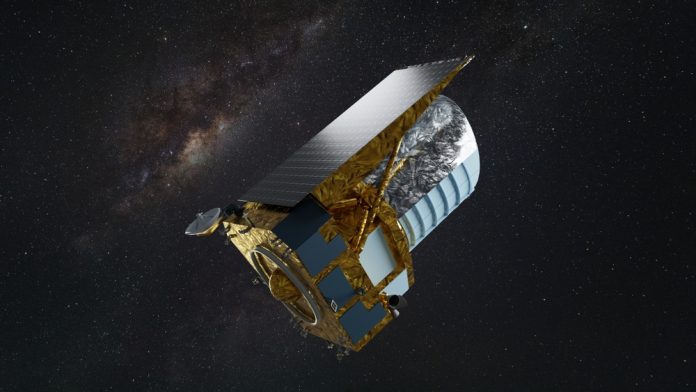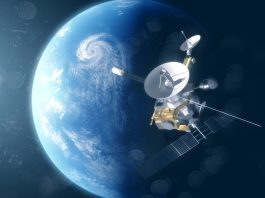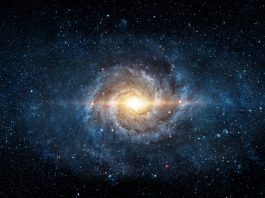The vast and mysterious dark Universe is coming into sharper focus thanks to the latest data from the Euclid telescope.
Thanks to Euclid, scientists are now closer than ever to understanding dark matter and dark energy – two of the most elusive components of our cosmos.
With the UK playing a pivotal role, this groundbreaking mission is set to transform astrophysics and reshape our knowledge of the Universe’s fundamental forces.
Before Euclid, astronomers had to choose between wide-field, low-resolution images from telescopes like the Dark Energy Survey in Chile or highly detailed but small-scale images from the Hubble Space Telescope.
Euclid bridges this gap by combining panoramic and high-resolution imaging, covering a vast portion of the sky in exquisite detail.
Already, the data captured in this release rivals the total sky coverage of Hubble since 1990, demonstrating the telescope’s unprecedented capabilities.
The Euclid mission: A revolutionary space telescope
Launched by the European Space Agency (ESA) in July 2023, the Euclid telescope is designed to map the structure of the Universe in unprecedented detail.
Equipped with the UK-funded Visible Imager (VIS) – a 609-million-pixel super-camera – the Euclid telescope is observing billions of galaxies up to 10 billion light-years away.
UK-based institutions such as Mullard Space Science Laboratory and companies like XCAM Ltd have been integral to the development of the VIS instrument.
Developed with a £37m investment from the UK Space Agency, this cutting-edge instrument provides high-resolution images that will help scientists unlock the secrets of dark matter and dark energy.
UK Science Minister Lord Vallance added: “The UK space sector is playing a leading role in the Euclid mission which, as this new data shows, is revealing more about the role of gravity in our Universe, and the nature of dark energy and matter.
“The British-made visible imager and data processing tools are central to these observations.”
Understanding strong gravitational lensing
One of Euclid’s most exciting discoveries involves strong gravitational lensing – an effect where light from distant galaxies bends around massive foreground galaxies due to gravity.
This cosmic magnification allows astronomers to infer the total mass of galaxies, including the presence of dark matter.
By analysing how light is warped, researchers can create detailed maps of dark matter distribution and begin to decipher its properties.
Harnessing AI and citizen science for discovery
Euclid’s sophisticated data analysis employs AI and machine learning to identify rare gravitational lensing events.
Complementing this, over 1,000 citizen scientists have contributed to the mission through the Space Warps project on the Zooniverse platform.
Their visual inspections have been crucial in identifying strong lensing candidates, highlighting the power of collaboration between AI and human expertise.
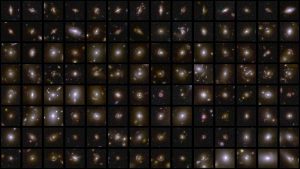
Credit: ESA/Euclid/Euclid Consortium/NASA, image processing by M Walmsley, M Huertas-Company, J-C Cuillandre
Insights from the latest data release
The latest Euclid data release includes observations of distant galaxies and numerous transient cosmic phenomena such as supernovae, gamma-ray bursts, and fast radio bursts.
This treasure trove of information classifies over 380,000 galaxies and identifies 500 gravitational lens candidates, shedding light on the dynamic processes shaping the Universe.
Euclid’s ‘quick’ data releases serve as preliminary showcases of the telescope’s capabilities, allowing scientists to refine data analysis tools in preparation for major releases.
The first official cosmology data release is set for October 2026, promising even more profound discoveries.
Professor Adam Amara, Chief Scientist at the UK Space Agency, who first proposed the idea for Euclid, said: “Previously, astronomers like me used wide low-resolution surveys to find strong lenses and then requested Hubble for follow-up observations. Now, Euclid accomplishes both tasks in one shot.
“This data release is the first clear evidence that Euclid will be a unique, rare object finder (as well as an exquisite dark energy measuring machine). In terms of rare objects in the Universe, I’m excited to see what ‘unknown-unknowns’ it will discover – it’s been a long wait.”
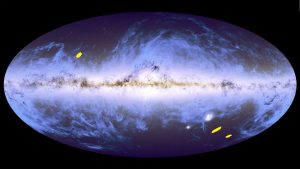
Credit: ESA/Euclid/Euclid Consortium/NASA; ESA/Gaia/DPAC; ESA/Planck Collaboration
The broader impact of space science
Beyond space exploration, Euclid’s technological advancements have far-reaching benefits. The development of compact, efficient imaging technology for space missions is influencing consumer electronics, such as smartphones and laptops.
Additionally, machine learning techniques refined for Euclid’s data analysis are now being applied to medical imaging, improving diagnostic accuracy and patient outcomes.
The vast data-processing capabilities developed for space research are also being adapted to predict disease outbreaks and enhance healthcare analytics.
A new era of cosmic discovery with Euclid
With Euclid’s mission underway, scientists anticipate a wealth of discoveries that will deepen our understanding of dark matter, dark energy, and the structure of the Universe.
As the mission continues to gather and analyse vast amounts of data, the UK remains at the forefront of these cosmic revelations, pushing the boundaries of astrophysics and space science.
The Euclid telescope is not just a technological marvel; it is a gateway to unlocking the mysteries of the Universe.

